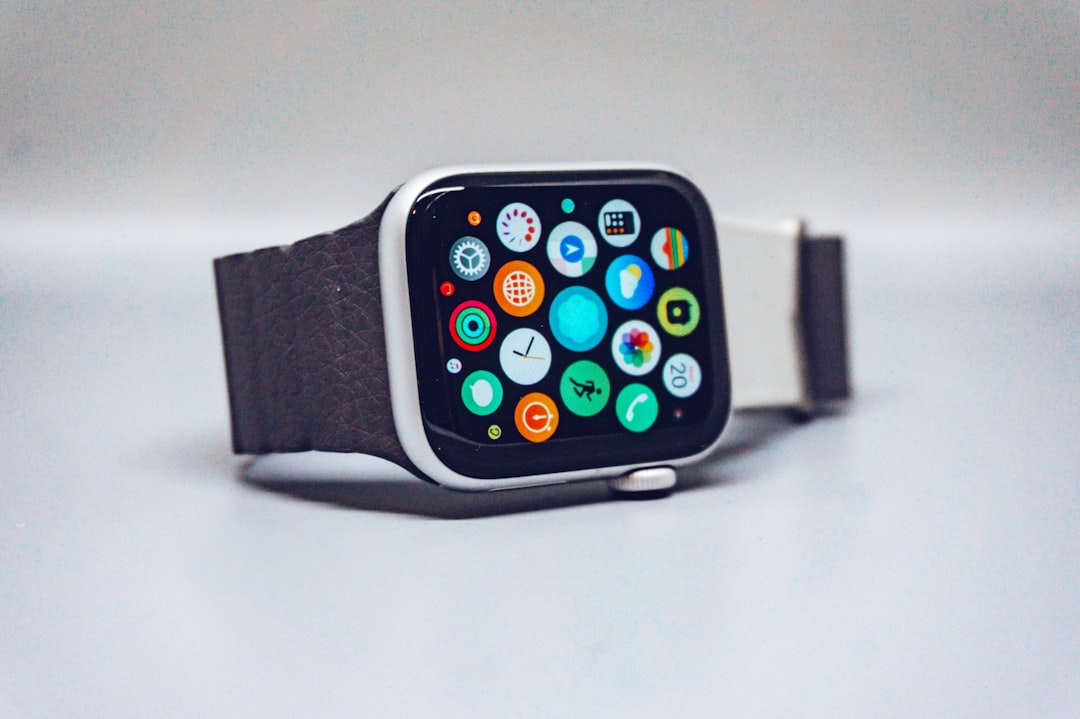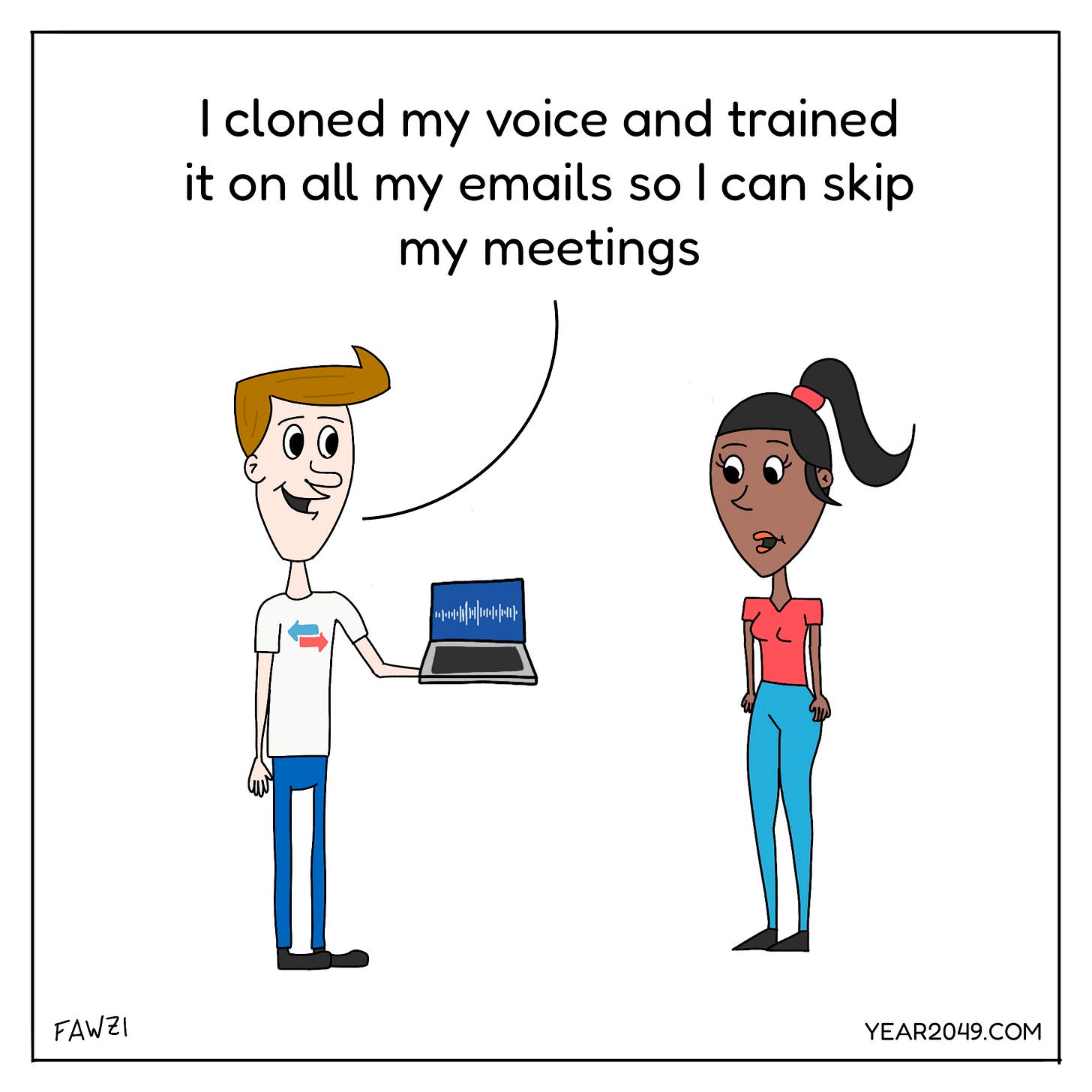Future Bites #2
Apple's noninvasive blood glucose tracking, the EU wants to regulate AI, Blue Origin brings solar power to space, and how to build your own chatbot with GPT-3
Welcome back to Year 2049!
If you want to join 1,000+ curious people learning about the technologies, innovations, and ideas shaping the future, subscribe to get it in your inbox every Friday:
Hey friends 👋
We’re back with another edition of Future Bites!
I decided to start publishing these every Friday. Don’t worry, I’ll still be doing my usual deep dives. Here’s what to expect:
Future Bites: Published every Friday. This is where I’ll share important stories, developments, and analysis. To make things more fun, I’m bringing back the weekly cartoon and adding a “Resources” section to share tools and tutorials for your own work or creative experiments.
Deep Dives: Published twice a month. This will be the typical format you’re used to.
Bonus: I created a “Future 101” page where you can read all the foundational explainers I wrote about nuclear fusion, vertical farming, hydrogen fuel, and more. Future Bites will include important developments about these technologies or companies I previously spoke about.
Today’s Edition
Cartoon: The Digital Clone
Stories:
Apple’s no-prick blood glucose monitoring tech
The EU wants to regulate AI
Blue Origin built solar cells using simulated lunar soil
Resources:
How to build a chatbot with GPT-3
🧢 GET YOUR YEAR 2049 HAT 🧢
Cartoon
The Digital Clone
Upcoming feature: the AI clone will send you a summary of each meeting and provide action items for you.
Stories
Apple’s noninvasive blood glucose tracking tech

Apple has been interested in noninvasive blood glucose monitoring tech since it acquired RareLight when Steve Jobs was still CEO in 2010. At a high level, it would work by examining your blood sugar using reflected light (using optical spectroscopy and silicon photonics).
The present: Apple’s Exploratory Design Group (XDG) has been working on this for years, and the technology is still years away from appearing on the Apple Watch. The technology is currently at a proof-of-concept stage, according to Bloomberg.
The future: The Apple Watch already dominates the smartwatch market, but it’s clear that Apple sees it as more than a watch. It wants to make it the must-have wearable to keep track of your health and prevent any illnesses or diseases. This added functionality would provide better integrations with nutrition apps to improve eating habits and even Apple’s Fitness app.
I’m writing a deep dive into Apple and Amazon’s push into the Health space soon. Stay tuned.
The EU wants to regulate AI

Ever since OpenAI released DALL•E 2 and ChatGPT, it feels like we’ve been in the Wild West of AI. There are no rules around it. The barrier to entry and access has been diminished to zero. Many people are excited about the technology. Many others are pissed.
The EU wants to establish the first set of laws to regulate AI, the AI Act. The Act was first proposed back in 2021 and is still in the negotiation process. The key proposals so far:
Risk levels: applications will be assigned a level of risk -> minimal, high, or unacceptable risk.
Transparency requirements: higher risk applications should notify humans if they’re interacting with an AI system, if emotional recognition is being applied to them, or if the content is a deep fake (with some exceptions).
High-risk applications include law enforcement, migration, medical devices and machinery, biometric identification, employment management (screening tools), and justice administration.
The present: The Act was first proposed before tools like ChatGPT were released. But now, the EU wants to regulate the general-purpose AIs (think GPT-3 or LaMDA) that power these applications. Unsurprisingly, Microsoft and Google are lobbying against it. The US also recently released a Blueprint for an AI Bill of Rights.
The future: Copyright and ownership violations have been the most controversial topics of debate in the past year, and the proposed laws don’t address those yet. The most challenging aspect of AI regulation will be to define abstract concepts like “intelligence” and “creativity”.
Read the entire AI Act or a summary
I also found this bi-weekly newsletter summarizing the latest developments surrounding the EU AI Act.
Blue Origin built solar cells using simulated lunar soil
Establishing reliable power sources on the Moon was vital to establishing a sustained human presence, as I detailed in The Lunar Gold Rush. And Blue Origin just announced a significant milestone in bringing solar power to the Moon.
The company, founded by Jeff Bezos, created a technique to turn lunar soil (regolith) into solar cells and transmission wires. The process turns regolith into iron, silicon, and aluminum, and even produces oxygen as a byproduct. The materials can be used to build solar cells, and the oxygen will be useful to support human life on the Moon.
The present: Blue Origin is using simulated regolith for now, but they claim it’s chemically and mineralogically equivalent to the regolith you find on the Moon. The company hints at a collaboration with NASA and their Artemis program in its blog post.
The future: NASA’s Artemis and China’s Chang’e space programs want to establish a sustained human presence on the Moon in our lifetime. Developing technologies and systems to “live off the land” will be necessary if they want to succeed, as it will reduce the eye-watering costs of shipping materials from Earth.
Resources
How to Build a Chatbot with GPT-3
Dan Shipper and
show us how to build our own chatbot with GPT-3. For their experiment, they built a product management chatbot, using archive.I should try this out with Year 2049’s archive…
🧢 Get your Year 2049 Hat 🧢
Many of you emailed me asking about buying the “i’m from the future” hat I was giving away during our last Year 2049 Championship quiz.
If you’re one of them, you can now buy it (or any of the other 3 hats I designed) from the Year 2049 store. They’re high quality, embroidered, and made from 100% organic cotton.
How would you rate this week's edition?










New to your Substack but I appreciate your journalism and especially the links.